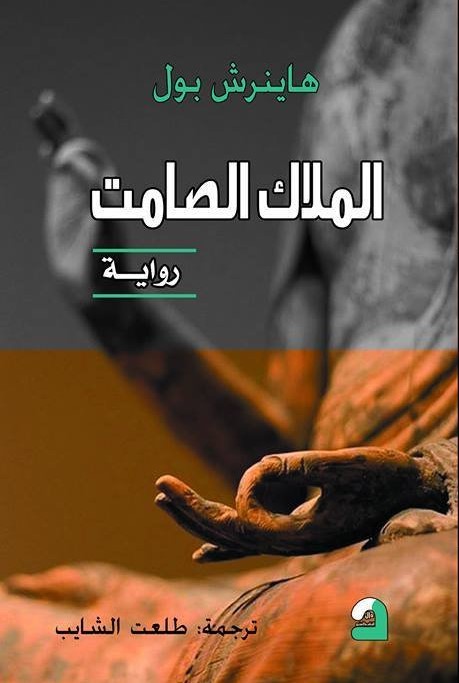What do you think?
Rate this book


222 pages, Paperback
First published September 1, 1992

The date of the destruction of any particular ruin could be determined by its overgrowth: it was a question of botany. This heap of rubble was naked and barred, raw stone, newly broken masonry, piled thickly, violently, with iron beams jutting out, sowing scarcely a spot of rust. There wasn’t a blade of grass to be seen; while in other places trees were already growing, charming little trees in bedrooms and kitchens, close by the rusty shell of the burned-out stove.People struggle with growing, accepting, moving on.
She was secretly cursing the sudden impulse that had led her to clean the room. Where had it come from? She didn’t know. The desire for order and cleanliness was totally new, and she knew that it was senseless. Everything had seemed cleaner before: spots and ugly circles were now visible where she had damp-mopped the floor, ancient ground-in chalk that hadn’t been noticeable before. All her efforts had served only to reveal a strange, transparent film of repulsive stains that appeared ineradicable…an infinite expanse of dirt appeared that now threw her into despair, and against which all struggle was useless.
Quickly he broke off a large piece of the bread. His chin trembled and he felt the muscles of his mouth and jaws twitch. Then he buried his teeth in the soft, uneven place where the bread had been broken, and bit in. The loaf was old, at least four or five days old, perhaps even older, plain brown bread bearing some bakery's red paper label; but it tasted so sweet. He bit in even more deeply, taking the leathery, brown crust into his mouth as well; then he seized the loaf in his hands and tore off a new piece. While he ate with his right hand he held the loaf fast in his left, as if someone might come and try to take it from him, and he saw his hand lying on the bread, thin and dirty, with a deep scratch that was soiled and scabbed.
His heart kept on pounding. He was still thinking about the bread, and his heartbeat was like the gently painful yet pleasant throbbing of a wound: a large, raw spot in his chest, his heart.
---
In the distance, beyond the community gardens, jutting high above the railway embankment, he saw the charred ruins of the city, a dark, ragged silhouette—he felt a deep, piercing pain and pulled the window closed again. Now, within, it was dim and quiet once more, shut off from the chirping of the birds. he now understood why she hadn't wanted to open the window.
The curtains had been pulled open, and in the large, black window frames stood the fantasylike image of the ruins: smoke-blackened flanks of buildings, cracked gables that seemed about to fall—overgrown mounds that had been ripped apart a second time, leaving only a few spots where the green was mossy and peaceful.
His gaze remained below: the altar was buried in debris, the choir stalls had been toppled by the blast. He saw their broad brown backs inclined in what seemed sarcastic prayer. The lower rank of saints on the columns showed gaps as well: abraded torsos and flayed stone, hideous in its mutilation and painfully deformed, as if it once had been alive. He was struck by the demonic grotesqueness. A few faces grimaced like furious cripples because they lacked an ear or a chin, or because strange cracks deformed them; others were headless, and the stone stumps of their necks thrust up horribly from their bodies. Equally disturbing were those who lacked hands. They almost seemed to bleed, silently imploring, and a baroque plaster statue was oddly split, almost cracked like an egg: the pale plaster face of the saint was undamaged, the narrow, melancholy face of a Jesuit, but its chest and belly were ripped open. The plaster had trickled down—it lay in whitish flakes at the base of the figure—and from the dark hollow of the belly straw spilled forth, saturated with hardened plaster.
He stood up, walked quietly over to the door, and opened it cautiously. Light was coming from the kitchen. The old, blue coat that she had draped over the windowpane let large, yellow beams of light in through its tattered holes, and the rays fell onto the debris in the hall: the axe blade gleamed somewhere and he saw the dark logs, their split surfaces glowing yellowly. He approached slowly and now he could see her. He realized he'd never seen her like this before. She was lying on the couch with her legs drawn up, wrapped in a large, red blanket, reading. He saw her from behind. Her long, damply shining hair seemed darker, tinged with red; it fell across the arm of the couch. A lamp stood beside her, and the stove was lit. A pack of cigarettes lay on the table, together with a jar of marmalade, a loaf of bread that had been cut into, and beside it the knife with its loose, black handle. . . .